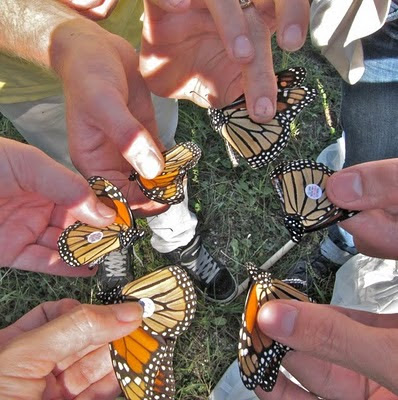In today's paper in the NY Times, under the Science section of the paper, Sindya N. Bhanoo writes about male dancing flies found in Mount Fuji and their unique way of what assumes to be a way of ornamentation.
Dancing Flies Dress Up to Lure Female Partners
By SINDYA N. BHANOO
Published: September 27, 2010In the animal kingdom, it is common for males to have ornamentation, like bright feathers, to impress females of their species, but a newly identified species of dancing flies found in Japan adds something new to the game of sexual display.
The ornamentation, a protrusion shaped like a boxing glove, often appears on just one of the fly’s front legs. The flies were found in the forested regions of Mount Fuji. While some males had the ornament on both legs, and some on neither, many had it on just one leg.
The researchers describe their finding in the journal Biology Letters.
“One struggles to explain why they are asymmetric — it could mean that this thing sits down on a log and sticks one leg up in the air to attract females,” said Adrian Plant, a taxonomist at the National Museum of Wales and one of the study’s authors. “We need more in-the-field live observations of the insects.”
Of the 33 male flies collected, 14 had one ornamented leg, and the remaining had either two or none. The fact that so many were asymmetric led the researchers to believe that it was more than a freak of nature.
What does seem clear is that the boxing glove detracts from the insect’s ability to fly efficiently, which adds to the idea that its function is to attract females. “It’s just like having a wild hairdo,” Dr. Plant said.
Further research is needed, but it is possible that the gloves also contain silk-secreting glands that allow the flies to capture prey and display their catch to potential female partners.
http://www.nytimes.com/2010/09/28/science/28obfly.html?_r=1&ref=science#
Sae


























